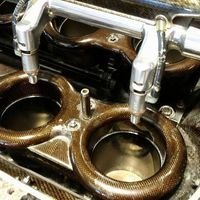Aero Aids, Do They Work? In Particular Gt Wings? Now You Know!
Announcements
-
Similar Content
-
Latest Posts
-
Take it to a sparkie. We'll never work out what is borked from across the internet. It'll be something unexpected.
-
I understand a shop being concerned "their" tune will be taken and used by another shop, but assuming you are paying by the hour access to their existing skills and IP should be included in that price. Password protection would be a total deal breaker for me as it locks you in to them forever, what if they go broke?
-
Yes, the CV shop will confirm if the joint is reusable, it almost always just needs a new boot and grease. I'm not sure on current pricing, I last had a set done ages ago, but the $190 for new/aftermarket might be very competitive.
-
By TurboTapin · Posted
I got that timing belt wrapped up last week. Engine actually sounds much better; I'm presuming the belt may have been slightly slapping the top belt cover. Now onto my next unexpected issue... I can't find a Dyno that doesn't lock up the ecu once done. We have what seems to be 6 local tuners who do Haltech, One is an RX7 specialty shop so I'll avoid them, and so far three of the others have stated they password lock the ecu once complete, which I refuse to accept. I'm waiting on responses on the last two... I was hoping to get it done on May 17th. -
News to me. I didn't run across any when I researched them.
-



Recommended Posts
Create an account or sign in to comment
You need to be a member in order to leave a comment
Create an account
Sign up for a new account in our community. It's easy!
Register a new accountSign in
Already have an account? Sign in here.
Sign In Now